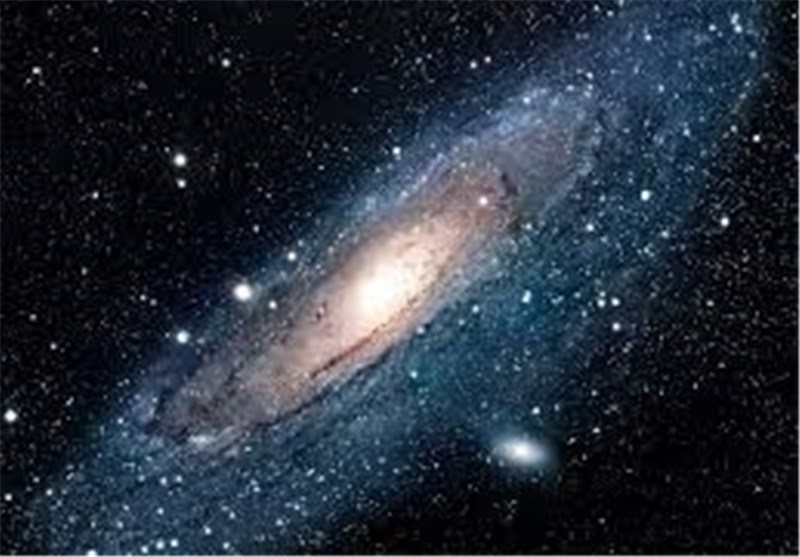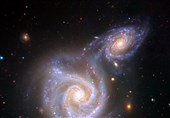Gaia Satellite Detects a Shake in Milky Way
TEHRAN (Tasnim) – A team led by researchers from the Institute of Cosmos Sciences of the University of Barcelona (ICCUB, UB-IEEC) and the University of Groningen has found, through the analysis of Gaia data, substructures in the Milky Way that were previously unknown.
The findings, which appeared when combining positions and speed of 6 million stars from the galactic disk, have been published in the journal Nature.
"We have observed shapes with different morphologies, such as a spiral similar to a snail's shell. The existence of these substructures has been observed for the first time thanks to the unprecedented precision of the data brought by Gaia satellite, from the European Space Agency (ESA)", says Teresa Antoja, researcher at ICCUB (IEEC-UB) and first signer of the article. "These substructures allow us to conclude that the disk of our galaxy suffered an important gravitational disturbance about 300 and 900 million years ago."
This is one of the great first findings of "galactic archaeology" following the publication of the Gaia data; this data could allow researchers find out about the origins and evolution of the Milky Way.
What caused this disturbance? To answer this question, the researchers compared the structure and level of twisting of the spiral with models of the dynamics of the galaxy. They developed a hypothesis that the disturbance was caused by the Sagittarius Dwarf galaxy passing near the Milky Way disk.
"The study implies, definitely, that our galaxy's disk is dynamically young, sensitive to disturbances and changing over time," says Antoja. "One of the most distinguishable forms we saw is the spiral pattern of the stars near the sun, which had never been seen before. Actually, the observed shapes in the graphics were so clear (unlike common cases) that we thought it could be a mistake in the data," says Antoja.
More than 100 European engineers and scientists, among which the UB played a distinguished role, worked for months on the verification and validation tasks of the Gaia data. As part of this task, Mercè Romero Gómez, UB researcher, says, "With the simulations carried out at the UB, we could also reproduce the observed spirals."
Similar to a stone falling in a pond and creating waves that spread on the surface, or a magnet getting close to iron fillings that are repelled in a particular direction, the stars in the galactic disk were reordered in a certain way after the gravitational attraction of the satellite galaxy that passed next to them. After some time, the stars maintained the effects of the disturbance that shook them in their movements, and now a spiral can be seen in the graphics.
Amina Helmi, researcher at the University of Groningen, says, "We know our galaxy is 'cannibal,' and has grown while eating other small galaxies, like it is doing now with the Sagittarius dwarf galaxy."
Nonetheless, the expert notes that "the mass of Sagittarius is still large enough to cause a notable gravitational impact." What researchers observe now does not respond to a collision between galaxies, but rather by Sagittarius getting closer to the Milky Way's galactic disk.
The data analyzed in this study is part of the second Gaia release, which was published on April 25, 2018.
"Scientists and engineers of the UB played an essential role in making these data a reality," says Xavier Luri, director of ICCUB and coordinator of the team that built the Gaia archive. The effort of more than 400 scientists and engineers allowed publishing positions and precise movements for more than 1,300 million objects. This second catalogue—which embraces the first 22 months of data gathering—published the first spectroscopic data for some million stars in the solar surroundings, which allow researchers to measure the speed of the stars in our line of sight and obtain, therefore, the three velocity coordinates of the stars. These data have enabled the discovery that has been now published in Nature.
Now, the Gaia satellite has logged more than 48 months of successful operations, and ESA has prolonged the mission until late 2020. ESA is now assessing a second two-year mission. Carme Jordi, UB researcher and member of the Gaia Science Team, says, "everything suggests this is only one of the first discoveries of a wide series of new findings and surprises hidden in Gaia data published in April—the tip of the iceberg in the study of the origins and the evolution of the galaxy in which we are."






